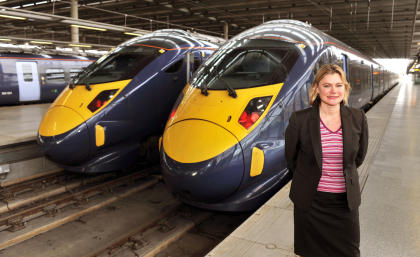The £32 billion gamble: Why Britain has opted for high-speed rail
The Government has agreed on plans for the controversial high speed rail project, HS2, to go ahead at an estimated cost of £32 billion to the taxpayer.

The network will link the north of England to London, with the initial stage seeing a route from the capital to Birmingham by 2026. Further developments will see stations in Leeds and Manchester connected by the line, with trains expected to hit speeds of 250mph – faster than current ‘bullet trains’ in Japan.
The project has been hotly contested by conservationists, who are concerned about the impact upon the environment, while economic think tanks raised concerns over the financial benefits of the mammoth scheme. Which leaves the question, will the £32 billion gamble pay off?
Cost efficiency
The Government has shown immense support for HS2 in a time in which national coffers could not be any tighter. David Cameron himself said last week that his plan for the “testing” year ahead was to rebalance the economy “away from Government spending, excessive borrowing, financial services and consumption”. His backing for the venture is dependent on estimates that the HS2 line income will surpass its £32 billion outlay.
Of that, the Government is expected to pay between £24 and £26 billion building and operating the line over the next 60 years, with HS2 Ltd estimating an income of between £47 and £59 billion from high-speed rail. At the moment it is impossible to know whether these figures will pan out, with the Adam Smith Institute claiming that high-speed rail “will become a major burden on public finances in years to come”.

"The potential for overspending is worrying,” said institute head of research Sam Bowman. “A tunnel in transport minister Cheryl Gillan's constituency will add £500 million to the £32 billion bill - at £190,000 per yard, or £5,300 inch, it raises the possibility of massive extra spending to keep key MPs happy.
“It is staggering that the Government is prepared to use so much taxpayers' money for such a risky, costly project which will almost certainly require a significant long-term subsidy to remain operational, he added.” Despite the criticisms that surround costing for HS2 the Government has stood firm, with transport secretary Justine Greening calling the project “our generation’s investment in Britain and our children”.
High speed rail demand
Also key to the dispute over HS2’s implementation is whether there is a demand for high speed rail within Britain. The route boasts an extra 26,000 passenger seats each hour on a line that will cut the journey from Birmingham to London by 39 minutes.
The second stage of development, which will complete in 2033, will take journey times from Manchester to London down to 1 hour and 8 minutes. The Government has asserted that this will bridge the gap between the north and the south, linking “some of our greatest cities”. Others have complained that this time saving does not justify the enormous cost and effort put into the project.
“Past experience in Britain and elsewhere suggests that governments tend to wildly overestimate the demand for high-speed rail,” warned the Adam Smith Institute’s Bowman. “Britain's past experience with high-speed rail, the line connecting London St Pancras to the Channel Tunnel, was a disaster – it sold for less than half of its construction cost and passenger numbers were less than a third of the projected number.”
Environment impact
HS2’s huge structural development was undoubtedly going to come with concerns over the impact upon the environment and this is an issue that has dominated the way the network was planned.

Transport secretary Justine Greening admitted that the 140-mile line from London to Birmingham needed “great consideration” due to these problems and HS2 Ltd is confident that the impact upon the environment is minimal.
As part of this around half of the London-Birmingham route will be placed in tunnels or cuttings, a plan that has included the lengthening of a tunnel from Little Missenden in Buckinghamshire – going through the picturesque Chilterns.
The move was criticised by local leaders with leader of Chiltern District council, Nick Rose, going as far to say that it would “wreck the lives” of those in the community while causing an “irrecoverable scar of the face of the Chilterns area of outstanding natural beauty”.
“It will not just affect those close to the line but the construction traffic will seriously impinge on everybody for several years,” he said. “Any government, if it pursues the scheme, will never be forgiven.”
Given the cost, effort and criticism it is perhaps a surprise that the government has decided to go ahead with HS2, a huge risk given economic cutbacks that are currently being put into place. The scheme, originally devised by the Labour Government, will not be fully built for another 21 years and is reliant on cost efficiency to be as a “generation investment in Britain”.

 Yahoo News
Yahoo News 
